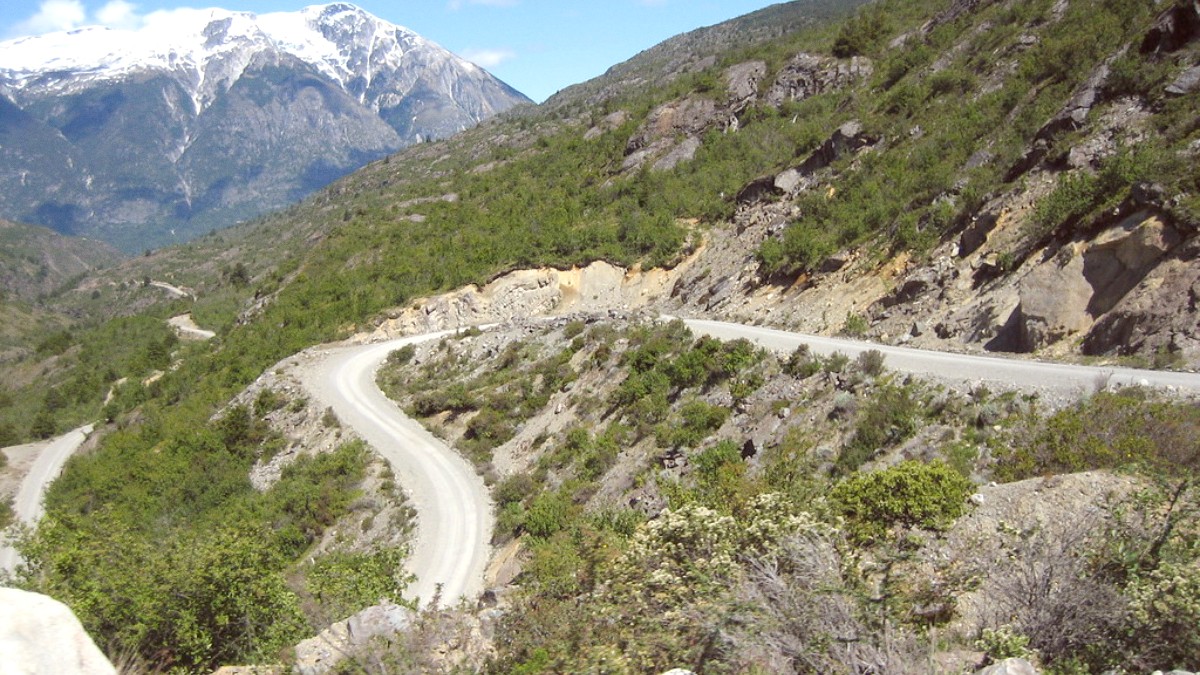
Chile
Patagonian cuisine is hearty and revolves around locally sourced meat, especially lamb and beef, along with fish like salmon and trout. Basic vegetables and potatoes often accompany meals. The culinary focus is on warmth and sustenance, reflecting the challenges of living in this remote, often harsh, environment.
Meal Times: Lunch (almuerzo) is often the main meal of the day, typically served between 1 pm and 3 pm. Dinner (cena) is later, usually from 8 pm to 10 pm. Some restaurants may close between lunch and dinner service. Tipping: A 10% tip for good service in restaurants is standard. Some establishments may suggest adding it as "propina" to the bill; you can decline or adjust it. Bread: Bread and pebre (a spicy salsa made from onion, cilantro, and chili) are typically served before meals. Table manners: Generally relaxed. Enjoy your meal and the company.
Lamb (cordero), specifically cordero al palo (whole roasted lamb on a spit), is a signature dish. Beef (asado) is common, along with some venison. Salmon (salmón) and trout (trucha) are prominent, fresh from the region's abundant rivers and lakes.
Potatoes (papas), onions, carrots, and squash are staples, delivering comforting and filling sides. Local berries like calafate, maqui, and murta appear in desserts, jams, and liqueurs, delivering unique tart and sweet flavors. Locally produced cheeses are available, often from small farms.
Patagonian cuisine uses fewer strong spices than other Latin American cuisines, focusing on the natural flavors of the ingredients. Common seasonings include garlic, onion, paprika, oregano, and cumin.
Whole lamb roasted slowly on a spit over an open fire for several hours. This iconic Patagonian dish delivers incredibly tender and flavorful meat.
Find it at rural eateries (quincho), special events, or traditional estancias (ranches).
Chilean barbecue, typically beef, prepared over coals. While cordero al palo is specific to lamb, asado refers to a broader grilling tradition common at social gatherings and restaurants.
Widely available at restaurants and local gatherings.
Fried fish, especially local salmon or trout, fresh from the region's abundant waters.
Available in restaurants, specifically near lakes and rivers.
Fried pumpkin fritters, often served with pebre (spicy salsa) or sweet chancaca (brown sugar syrup).
Calafate, maqui, and murta berries (seasonal) appear in pies, jams, ice cream, and liqueurs. Enjoy them fresh when available. German-style cakes and pastries (kuchen) also appear.
Fine dining establishments are very limited. Coyhaique presents the most options for upscale dining, but generally, the focus stays on hearty, traditional Patagonian fare.
Mid-range restaurants exist in most towns. These establishments present Chilean and Patagonian specialties, often focusing on local ingredients, delivering a comfortable dining experience. Local cocinerías (small eateries) and panaderías (bakeries) deliver economical and authentic meals.
Navigating dietary restrictions can be challenging but is becoming easier. Chilean cuisine is very meat-centric, so finding vegetarian and vegan options can be challenging but is improving.
Carry translation cards explaining dietary restrictions in Spanish to communicate clearly with restaurant staff.
Essential for effective communication.
Research specific restaurants in advance via online reviews or call ahead. Supermarkets in larger towns offer more options for self-catering and purchasing specialty items.
Planning ahead can make dining easier.
Some estancias offer tours with traditional food experiences.
Fiestas Costumbristas in summer feature typical foods, music, and dance.
Explore ferias in towns like Coyhaique for fresh produce and local goods.
Meals focus on local products and warm hospitality, delivering a true taste of the region's culture.
Awareness of gluten-free and other allergens is very limited in many local establishments.
Cross-contamination is a risk.
For severe allergies, self-catering is the safest option. Carry translation cards explaining dietary restrictions in Spanish.
This facilitates clear communication with staff.
Traditional street food is limited. Empanadas are the most common and widely available "grab-and-go" food. Find these at bakeries (panaderías) and small eateries for a quick meal or snack.
The Carretera Austral offers a range of dining experiences, prioritizing hearty, local fare. Most establishments focus on traditional Patagonian dishes.
Some estancias (ranches) offer tours or overnight stays that include traditional Patagonian food experiences.
Local markets (ferias) are good places to interact with producers and learn about regional ingredients.
Look for small-scale cheese makers, honey producers, and berry product artisans throughout the region.
For special occasions, some higher-end lodges might arrange private dining experiences or tasting menus featuring regional delicacies.
Inquire directly with your accommodation.
Some community-based tourism initiatives or smaller hospajes offer home-cooked meals, a personal glimpse into Patagonian culinary traditions.
These are often incredibly authentic.
The region's culinary experiences are about local connection and genuine hospitality, not polished fine dining.
Seasonal availability dictates many fresh ingredients, especially berries, so time your visit for specific flavors.
Traditional food preparation, especially cordero al palo, presents fantastic photographic moments.
Exploring the Carretera Austral's culinary landscape is a journey into hearty, traditional flavors shaped by Patagonia's environment and pioneering spirit. Be open to local specialties and the warm hospitality that accompanies them.